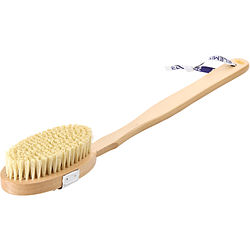What Is Lymphatic Drainage & Should I Add it To My Wellness Routine?

The human body is truly beautiful and mind blowing, a complex network of intricate systems working in harmony to maintain your health and well-being and keep the balance. One of the most fascinating systems is the lymphatic system, which plays a crucial role in immune function, fluid balance, and waste removal.
Lymphatic drainage, a technique designed to optimize the functioning of the lymphatic system, has exploded in the wellness space. So what is it and should you add it to your wellness routine?

Understanding Lymphatic Drainage:
Lymphatic drainage is a manual therapy technique aimed at stimulating the flow of lymphatic fluid within the body. Lymphatic fluid carries waste, toxins, and pathogens away from tissues and back into the bloodstream for elimination. This gentle, rhythmic massage technique encourages lymphatic flow, facilitating the removal of toxins and boosting immune function.
Benefits of Lymphatic Drainage:
- Detoxification: By promoting the elimination of waste and toxins, lymphatic drainage helps detoxify the body, leaving you feeling refreshed and rejuvenated.
- Enhanced Immune Function: Lymphatic drainage stimulates the production of lymphocytes, the immune system’s frontline defenders, bolstering the body’s ability to fight infections and diseases.
- Reduced Inflammation: The gentle strokes of lymphatic drainage can alleviate swelling and inflammation by reducing excess fluid buildup in tissues, making it useful for managing conditions such as lymphedema.
- Improved Skin Health: By improving lymphatic circulation, this technique can enhance the delivery of nutrients to the skin cells, promoting a healthy complexion and reducing puffiness.
- Relaxation and Stress Relief: Lymphatic drainage massage promotes relaxation, reduces stress levels, and aids in improving overall well-being.
Controversies:
While lymphatic drainage is generally considered safe and non-invasive, it has not been extensively studied in clinical settings. Some critics argue that the scientific evidence supporting its specific health benefits is limited and anecdotal. Additionally, there have been concerns regarding the potential for improper technique or excessive pressure leading to tissue damage or worsening of certain medical conditions. As with any therapy, it is advisable to consult with a healthcare professional before incorporating lymphatic drainage into your wellness routine, especially if you have underlying health issues.
Critiques and Alternatives: Critics suggest that lymphatic drainage may have a placebo effect and that any perceived benefits could be attributed to the relaxing nature of the massage itself. Moreover, skeptics argue that the body’s lymphatic system is self-regulating and does not require external stimulation. It is important to acknowledge these viewpoints and make an informed decision based on personal experience and consultation with healthcare professionals.

Performing Lymphatic Drainage on the Arms:

Check out the Elemis women Body Detox Skin Brush to start.
To perform lymphatic drainage on the arms, you will need the following tools and materials:
- Massage oil or lotion: Choose a gentle, non-allergenic oil or lotion like Chilean Rosehip or Luz de Sur to lubricate the skin and facilitate smooth movements.
- Clean towels: Use clean towels to cover the area and ensure hygiene during the massage.
- Your hands: The primary tool for lymphatic drainage is your hands, which will apply gentle, rhythmic strokes.
Here’s a simple technique for lymphatic drainage on the arms:
- Begin by applying a small amount of massage oil or lotion to your hands.
- Start with the armpit area. Using your fingertips, make circular motions with light pressure, gradually working your way down the arm towards the wrist.
- Move from the armpit to the elbow, using gentle, sweeping motions. Repeat this step a few times.




